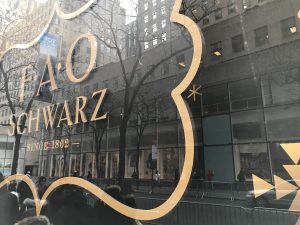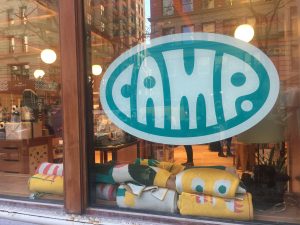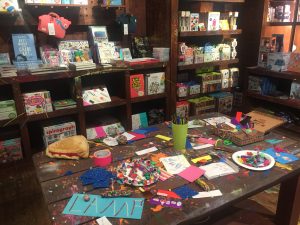A Tale of Two Toy Stores: FAO Schwarz vs. CAMP

Toys “R” Us is gone. The question has become: who will fill the void? From Party City’s Toy City pop-ups to JC Penney’s expanded toy sections to Kroger’s Toys “R” Us-branded sections, stores across the retail spectrum have entered the ring. But where these replacements have fallen short is the lack of focus on toys as a whole.
[bctt tweet=”This holiday season, two uniquely New York City shops emerged as viable contenders, one focused on the traditional while the other leaned toward the modern.” username=”medallionretail”]
FAO Schwarz and CAMP took the Big Apple’s families by storm. Here’s what they’ve done right and how they compare.
A lesson in the classics with FAO Schwarz
If it ain’t broke, don’t fix it, right? That’s the approach that legacy toy stores retailer FAO Schwarz took – with some necessary key tweaks, of course. The store had been a Midtown Manhattan landmark for decades, until closing in 2015. But what David Niggli, Chief Merchandising Officer of FAO Schwarz, noticed was, “New York wasn’t New York without FAO Schwarz.”
Under the new ownership of ThreeSixty, the store has been revamped in a new Rockefeller Plaza location that honors and preserves the essence of the brand while amplifying in-store experiences.

The iconic, life-size keyboard has been restored and is ready for play. Sales staff dressed in the brand’s mascot toy soldier uniforms engage with shoppers and stay true to the store’s legacy.
An interactive Build-A-Bear Rocket Ship, a baby doll adoption center where kids sign adoption paperwork (just like new parents), a Discovery Science Lab for exciting experiments, and a DIY race car section that comes complete with your own pit crew are just a few of the most notable new offerings. The key thing is that each section lends itself to the overall goal of the store: experimentation.

The store stayed true to its beloved brand, relying on the strong emotions of parents’ nostalgia and shock and awe for the new generation. The impressive result was a harmonious marriage of classics and new flair, all ready for kids and their families to explore and buy.
CAMP takes us back to Camp
CAMP represents the latest foray into retail (and media’s general interest in merchandising). CAMP targets Millennial parents, the demographic that is ripe for having kids and outfitting them with everything under the sun.

When you walk into CAMP, it feels simply like an old-fashioned general store – lots of wood and shelves for inventory. But head to the back and walk through a secret wall and you get to the exciting part. Dark and woodsy, the Base Camp section is all experience, no inventory. It feels like a true pop-up experience meets children’s museum, where kids can feel like they’re at summer camp. The section includes a tree house, an arts and crafts station, a disco room, and a “Campitheater” for daily events.

The entire idea operates on a different level than traditional stores, relying on retail partnerships for in-store activations and revenue from daily activities. During the holiday season, Mastercard holders received free toys and gift wrapping, but CAMP anticipates future partnerships as well. In fact, the store aims to rotate offerings every 8-12 weeks, like an exciting carousel of experiences.
CAMP’s next step is opening up more stores across the country to share camp-like experiences with a wider audience.
Succeeding in the experiential
Both toy stores took different approaches to achieving the same goal of experience-driven retail. FAO Schwarz kept the successful experiential elements of the past and added exponentially more. CAMP created an experience-first, inventory-second business model that has the excitement of a pop-up but the staying power of a brick-and-mortar store.
Where FAO Schwarz intermixed shopping and experience, CAMP created a distinct separation with the hidden Base Camp. But the important thing here is that both goals are achieved: consumers can have exciting experiences and purchase toys in one, fun location.
Our biggest takeaway is that it’s not really about old toy storers versus new – it’s about evolution. Where these retailers shine is in how they embrace the true goal of toys: fun. These are fun destinations that go above and beyond what Toys “R” Us was ever able to do, and we look forward to experiencing what they do next.
Join the conversation below. Tell us where you shop for toys with and without your kids now that Toys “R” Us is gone.
At Medallion Retail, you’ll find a retail marketing agency that’s at the pulse of what’s new and innovative. To explore ideas to keep your brand out in front, reach out to Michael Decker or Chris Gordon today at engage@meetmrpopup.com